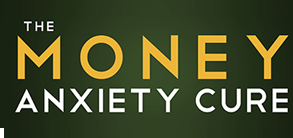Did you know that we have become, both personally and collectively, increasingly engaged in a modern epidemic known as money anxiety disorder, eroding our self-confidence, our relationships, and our vision of the future?
Our money anxiety can be triggered by negative events – fluctuations on Wall Street, a job loss, divorce, and even health issues. It can also be triggered by positive changes in our lives – the birth of a new child, marriage, or graduating high school or college. And even when our lives are stable, many of us suffer from an underlying anxiety of simply staying on budget and saving for retirement.
Like the economy itself, our anxiety about money fluctuates, but we don’t have to be at the mercy of it. We can learn to cope with an unpredictable future and stop the panic. There is a CURE for money anxiety disorder.
And that cure is mindfulness.
Joseph Goldstein, a highly respected Buddhist teacher in the West, once said: “Mindfulness is the basis for wise action. When we see clearly what is happening in the moment, wisdom can direct our choices and actions, rather than old habits simply playing out our patterns of conditioning.” If we can learn to pause and check in about what is really going on underneath the anxiety, fear, and stress of our money stories, it is possible to make more skillful decisions about our finances.
Mindfulness is a widely used practice in almost all spiritual paths, but it is called by different names in different traditions. It is discussed in great detail in ancient Hindu, Vedic, and Buddhist texts, and also in the Christian and Jewish faiths, which both talk about meditation. Since introduced here in the West, mindfulness has taken off as the next big thing in many spiritual circles. But this valuable practice is not a fad. It’s not just something that you do once in a while or even once a day on a cushion, nor is it a state of mind you must attain off in a monastery. It’s a useful, day-to-day, moment-to-moment tool that can be used everywhere and in any situation to enhance and bring clarity to our experience and our state of mind.
Right now, as you are sitting and reading, begin to notice your breath. Feel the chair holding you. Notice sensations in your hands, feet, and belly. As you read these words and incorporate these directions, you are being mindful. When you notice yourself drifting off to follow a thought, but then come back to breathing, you are being mindful. If you start thinking about a bill that needs to be paid, but then you consciously notice this thought, stay spacious and present with the sensations that come up, without distracting yourself by changing your thoughts and trying to mask unpleasant sensations, be with the emotion.
Throughout the next series of blogs, I will introduce you to some mindfulness practices to condition your mind toward a calmer state of being with a focus, specifically on your financial life. I encourage you to start off slow and steady, for mindfulness is a practice and just like the good intentions we set at the beginning of every new year, it is those practices that do not require too much time and effort that become habit.
I suggest you allow yourself two short practices a day. Behavioral scientists have found that just 7 minutes upon waking and 7 minutes before we close our eyes is a great way to put our intentions into action and change the neural connections in our brain for long-lasting positive results.
